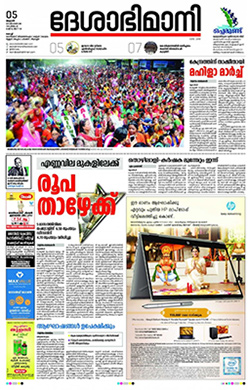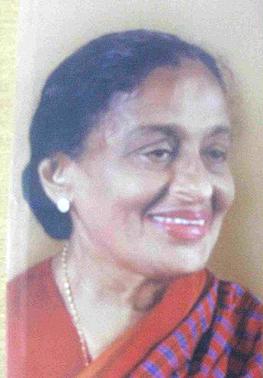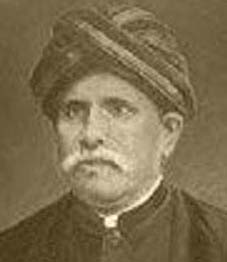Malayalam journalism encompasses journalism published and broadcast in the Malayalam language. Modern Malayalam journalism can be traced to the publication of the Raajyasamaachaaram and the Pashchimodhayam under the direction of Hermann Gundert in June 1847. Kerala has the highest media exposure in India with newspapers publishing in nine languages, mainly English and Malayalam.

Deshabhimani is a Malayalam newspaper and the organ of the Kerala State Committee of the CPI(M). It started as a weekly in Kozhikode on 6 September 1942 and converted to a daily in 1946. The paper now has ten different printing centres: Kozhikode, Kochi, Thiruvananthapuram, Kannur, Kottayam, Thrissur, Palakkad, Alappuzha, Kollam and Malappuram. At present, Puthalath Dinesan State Secretariat Member of the CPI(M) is the Chief Editor of the paper, K.J. Thomas, CPI(M), secretariat member of the CPI(M), the General Manager and V. B Parameshwaran, the Resident Editor.

Kottarathil Sankunni was an Indian writer of Malayalam literature. Best known as the author of Aithihyamala, an eight-volume compilation of century-old legends about Kerala, Sankunni's writings cover prose and poetry, including verses for Kathakali and Ottan Thullal. He was one of the founding members of Bhashaposhini Sabha founded by Kandathil Varghese Mappillai and was also involved with Bharata Vilasam Sabha, another literary initiative. He died on July 22, 1937.
Kattakayam Cherian Mappillai (1859–1936) was an Indian poet and playwright of Malayalam literature. He was known for the epic poem Shreeyeshu Vijayam, which earned him the title of Mahakavi. He was the founder editor of Vijnaana Rathnaakaram, one of the earliest literary magazines in Malayalam language. Pope Pius XI presented him a gold medal in 1931.

Moorkoth Kumaran (1874–1941) was a social reformer, a teacher and a writer in Malayalam. He came from a Thiyya family of Telicherry. He was a disciple of Narayana Guru and wrote the first biography of Guru. He also published some of the earliest short stories and novels in Malayalam.

Kandathil Cherian Mammen Mappillai was an Indian journalist, who became editor of the Malayalam-language daily Malayala Manorama after the demise of his paternal uncle Kandathil Varghese Mappillai. Besides being a noted journalist, he was an Indian independence activist and served a member of the Sree Moolam Popular Assembly in Travancore. He also went into development of plantations, and was the inspiration behind the various enterprises of his sons.

Annamma Mathew, also known as Mrs. K. M. Mathew, was the founder chief editor of Vanitha, the largest selling women's magazine in India, and wife of K. M. Mathew, Chief Editor of Malayala Manorama. She died after a brief illness at a private nursing home in Kottayam, Kerala in India.
Pulikkottil Joseph Mar Dionysious II was the Malankara Metropolitan of the Malankara Church, was born into the family of Pulikkottil (Kunnamkulam). He was the 14th Malankara Metropolitan.
Balarama is an Indian weekly comic magazine published by M. M. Publications, of Malayala Manorama Group from Kottayam, Kerala in Malayalam language. It is one of the most widely read children's magazines in India. Balarama celebrated its 50th year of publication in the year 2022.
Vennikkulam Gopala Kurup (1902–1980) was an Indian poet, playwright, translator, lexicographer and story writer of Malayalam. He was the author of a number of poetry anthologies, besides other works, and he translated Abhijnana Shakuntalam, Tulsi Ramayana, Tirukkuṛaḷ, the poems of Subramania Bharati and two cantos of The Light of Asia of Edwin Arnold into Malayalam. He also contributed in the preparation of a dictionary, Kairali Kosham. A recipient of the Odakkuzhal Award and Thirukural Award, Kurup received the Kerala Sahitya Akademi Award for Poetry in 1966. Sahitya Akademi honoured him with their annual award in 1974.

Kandathil Mammen Mathew was an Indian newspaper editor who served as the editor-in-chief of the Malayalam-language daily, Malayala Manorama.
Kandathil Eapen Mammen was an Indian freedom fighter. He was a follower of Mahatma Gandhi and K. Kelappan is often referred to as the Kerala Gandhi.

Kandathil Varghese Mappillai was an Indian journalist, translator and publisher who was the founder of the newspaper Malayala Manorama and the magazine Bhashaposhini.
Kandathil Mammen Cherian was an Indian media person and former chief-editor of Malayala Manorama, the Malayalam daily, ranked the first in Malayalam, the fourth in India. and the eleventh in the World, in terms of circulation. He is a recipient of Padma Bhushan and Padma Shri, the third and fourth-highest Indian civilian awards.
Kandathil Mammen Philip is an Indian entrepreneur from the South Indian state Kerala and a director of MRF Limited and Malayala Manorama group with business interests in tea, coffee and cardamom plantations and processing. He is also a director of many other companies such as Rembrandt and Vandykes Limited, Commercial Broadcasts Limited, India Coffee and Tea distributing Company Limited and Balanoor Plantations and Industries limited. Born to K. C. Mammen Mappillai and Kunjandamma as the sixth of their nine children, Philip is considered by many as the father of Indian rubber industry. Philip was honored by the Government of India, in 2001, with the fourth highest Indian civilian award of Padma Shri. His eldest brother, Kandathil Mammen Cherian and one of his younger brothers, Kandathil Mammen Mathew are recipients of Padma Bhushan awards while another younger brother, K. M. Mammen Mappillai and one of his nephews, K. M. Mammen Mathew have won Padma Shri awards.
Kerala Mithram was one of the earliest Malayalam language newspaper published from Cochin, Kerala, India during 1881. It was printed in the beginning of the month as three, then one week later. Devji Bhimji, from Gujarat was the patron of the newspaper. Kandathil Varghese Mappillai, the founder of Malayala Manorama, was editor-in-Chief and T.G. Paily was deputy editor.
Manorama School of Communication, also known as MASCOM, is a journalism school in Kottayam, India. Established in 2002 by K. M. Mathew with the support of Manorama group, it offers postgraduate diploma courses in print and broadcast journalism.

Onmanorama is the online English news portal of Malayala Manorama group, which publishes the Malayala Manorama newspaper read by over 20 million Malayalis across the world, Vanitha, the largest circulated women's magazine in India, The Week, an English weekly, and several other periodicals and children's books.










